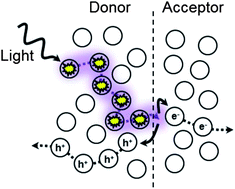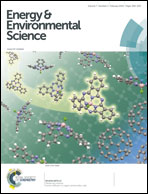Exciton diffusion in organic photovoltaic cells
Abstract
Exciton generation, migration, and dissociation are key processes that play a central role in the design and operation of many organic optoelectronic devices. In organic photovoltaic cells, charge generation often occurs only at an interface, forcing the exciton to migrate from the point of photogeneration in order to be dissociated into its constituent charge carriers. Consequently, the design and performance of these devices is strongly impacted by the typically short distance over which excitons are able to move. The ability to engineer materials or device architectures with favorable exciton transport depends strongly on improving our understanding of the governing energy transfer mechanisms and rates. To this end, this review highlights recent efforts to better characterize, understand and ultimately engineer exciton transport.


 Please wait while we load your content...
Please wait while we load your content...